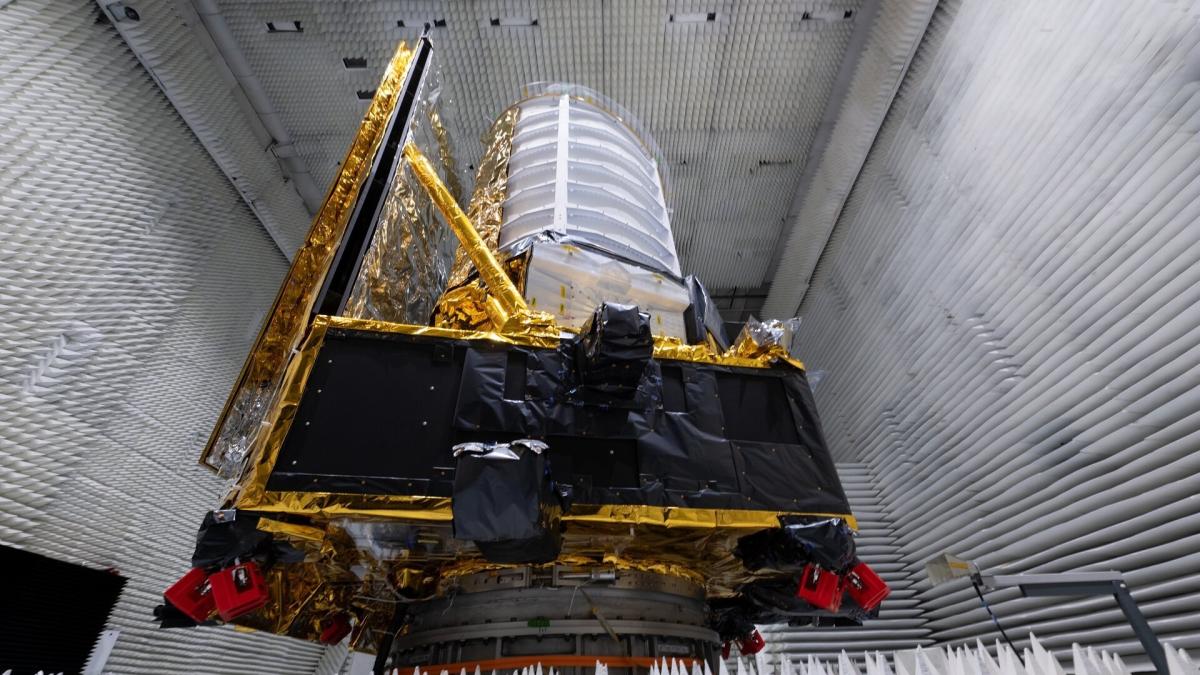The European Euclid mission will observe billions of galaxies for six years to create the largest and most accurate 3D map of the universe. Even now, 10 billion light-years away, its outcome would seem to be anyone’s guess: the most exciting discovery is the one you least expect.
The two-ton, 15-foot-tall spacecraft lifts off today on a SpaceX Falcon 9 rocket from Cape Canaveral, Florida. In addition to documents from the European Space Agency (ESA), Guadalupe Canas-Herrera, a theoretical physicist and researcher in cosmology at this organization, explains to EFE some of the mission’s main goals.
What is Euclid’s most important task?
Mapping the last ten billion years of cosmic history across more than a third of the sky, from “cosmic noon,” when most stars formed, to the present day.
This “look” into the past will make it possible to gather information about the shapes, locations and distances of galaxies. Everything will be put together in a 3D atlas that will be shared with the scientific community.
Why so many galaxies?
There is a need to build a detailed map of the distribution of matter in the universe and to infer the speed at which objects are receding from one another.
Only such a comprehensive atlas of the structure and history of the universe on a large scale will help reveal hitherto unknown features of dark matter and energy, and complete our understanding of gravity.
What is known about dark matter?
In the universe, the normal matter that incorporates planets, galaxies or stars accounts for 5%. The rest is in the form of dark matter (about 25%) and dark energy (70%), various components that cosmology is still trying to explain.
Dark matter, whose existence was discovered more than half a century ago, does not emit light but exerts gravity. It is essential to understand the way the universe is put together, from the superstructures of voids and superclusters of galaxies to the Milky Way.
Although it is not visible to us, its presence distorts the light coming from distant galaxies. This effect is called “gravitational lensing” and it was observed by Euclid, thus revealing the distribution of dark matter throughout the universe.
The hypothesis is that most of the darkness is made up of cold particles that are heavy and move relatively slowly. But it is very likely that some of them also consist of light (hot) particles moving at a speed close to light.
The question remains of how much, if any, of this hot dark matter is there, and what particles it is made of; Neutrinos are candidates, but there are still a lot of doubts flying.
What is dark energy?
It is one of the important questions in modern cosmology. This would produce an accelerated expansion of the universe.
At first it was believed that this expansion was a product of the “Big Bang” with which the entire universe was created. It has been accepted that at some point this expansion will end up slowing down due to the opposite effect of the gravitational force holding matter together, but this is not the case.
Something is creating more and more space between galaxies and that is dark energy, whose source, physics, and how it works are unknown.
Euclid will provide information about how the rate of expansion of the universe has changed over time and whether this expansion is the same in all directions.
Otherwise, what is known as the “cosmological principle” would be violated, according to which the universe, when observed on a sufficiently large scale, shows the same appearance in all directions (isotropy) and from all places (homogeneity).
This rule of thumb forms the basis of almost all models and analyzes used in cosmology.
Was Einstein wrong?
Matter and dark energy are associated with gravity. The best theory that exists today to describe it is Albert Einstein’s general relativity, but it has not been rigorously tested at great distances, such as the one Euclid would explore.
It never went that far, so one possibility is that the Standard Model of cosmology, based on this theory, works, but that alternative equations could also be a better fit. If so, they will have to pass the solar system “test”, as well as explain the theory of relativity of what is happening in our planetary system.
Guadalupe Cañas Herrera admits that he is a dreamer, like all theoretical physicists. “I’d like to see Euclid’s data overturn the standard cosmological model, because it would open the door to exploring other theories that could tell us a little more about the nature of dark energy and matter, and the origin of the universe.”
“But the model we have is very robust, so it wouldn’t be enough for Euclid to tell us that it’s not the best model that explains the data, and we have to verify it empirically with other alternative observations. That’s science.”

“Proud web fanatic. Subtly charming twitter geek. Reader. Internet trailblazer. Music buff.”







More Stories
OxygenOS 14 has more bad stuff than you thought
HONOR Magic6 Pro shows its power and quality against the Samsung Galaxy S24 Ultra
NASA has captured images of the famous horse-shaped nebula in unprecedented detail